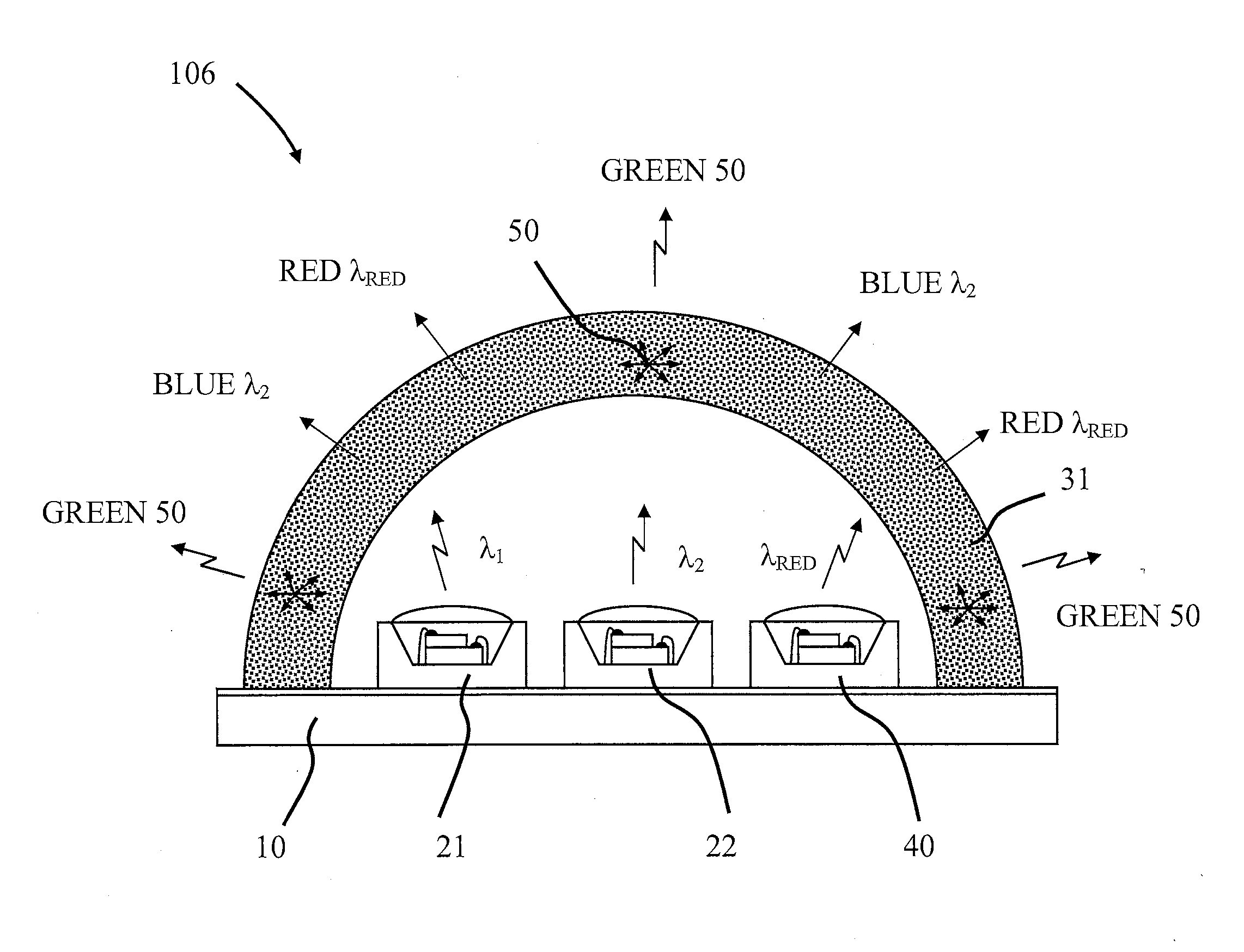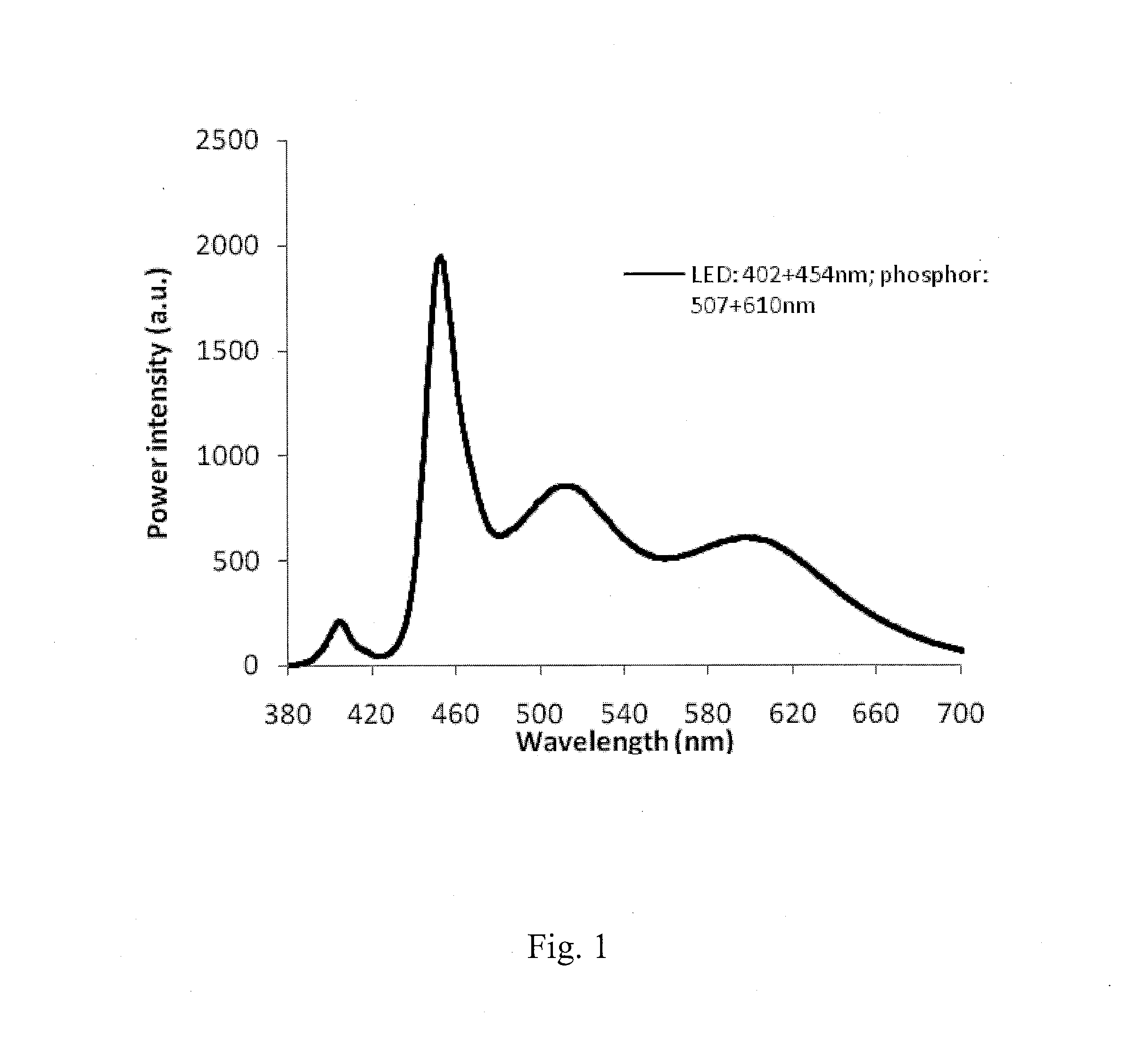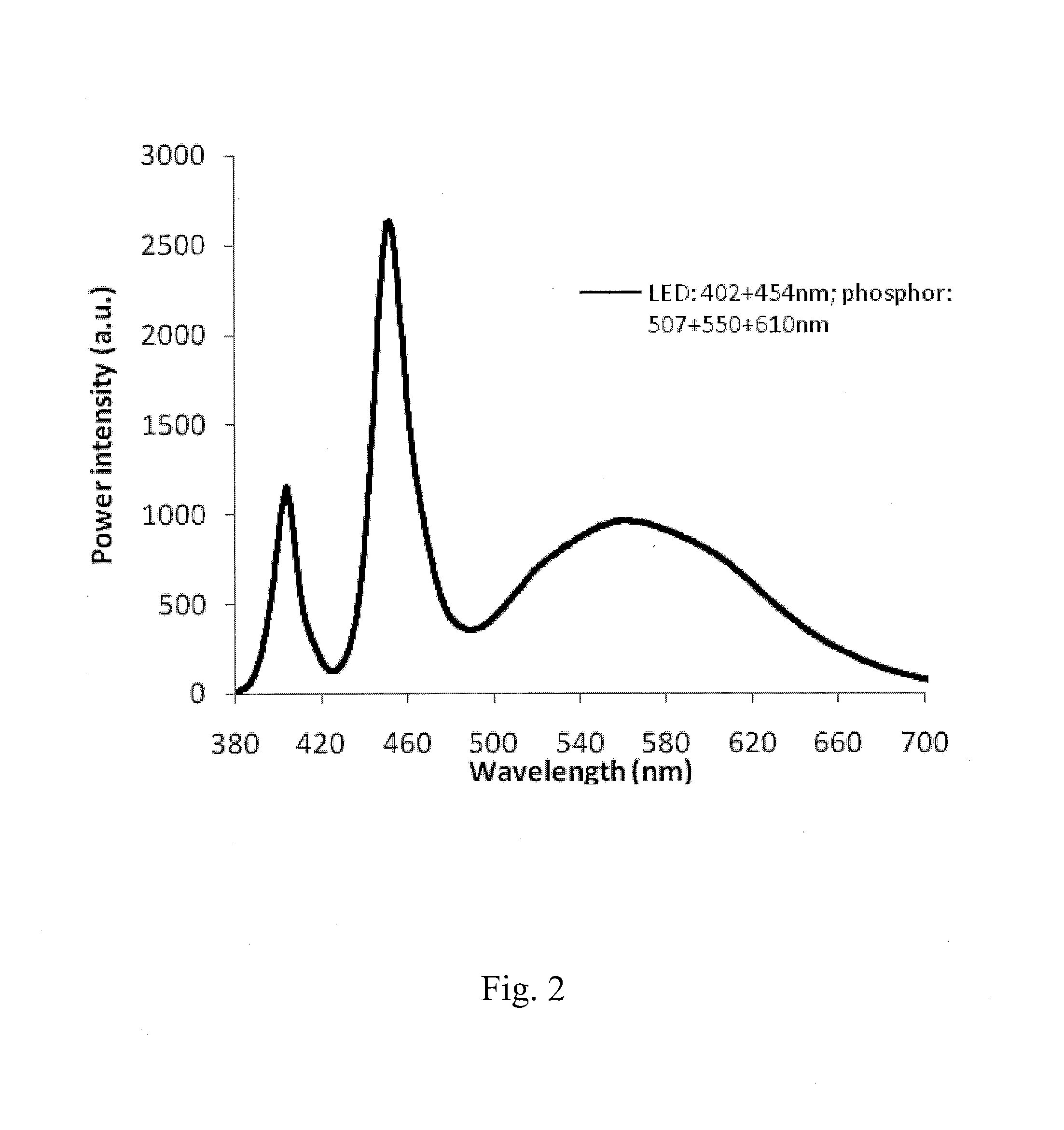White Light Illumination System with Narrow Band Green Phosphor and Multiple-Wavelength Excitation
- Summary
- Abstract
- Description
- Claims
- Application Information
AI Technical Summary
Benefits of technology
Problems solved by technology
Method used
Image
Examples
second embodiment
[0052]Unlike the first example that involved a mixture of two phosphors, in this second embodiment with a three-phosphor mixture in the phosphor package, there is created an essentially infinite number of blending ratios that can achieve the same target CIE. Generally, the addition of a yellow phosphor provided the advantage on high brightness, while the green and orange phosphors work advantageously to increase the CRI. In other words, optimization of the CRI value and the brightness may be achieved separately by fine tuning the ratio of the yellow phosphor concentration to that of the orange and green phosphors.
[0053]In the third example, a blue phosphor designated B450 was added to the green, yellow, and orange mix (G507, Y550, O610, respectively) discussed in the second example. FIG. 3 shows the emission spectrum from a white LED utilizing the same UV and blue LED chip sources as in the first and second examples (402 nm and 454 nm). The brightness was 23.62, the CRI 89.1. The bl...
sixth embodiment
[0058]The multi-chip excitation source in the first five examples was either a UV / blue combination or a purple / blue combination. High brightness, high CRI white light illumination sources can be provided by using a blue chip and green chip with a phosphor package having two phosphors in one embodiment, and three phosphors in another. These phosphors can be any combination of a green phosphor such as G530, a yellow phosphor such as Y550), an orange phosphor such as O590, and a red phosphor such as R662. In this sixth example, the chip set was a blue LED in combination with a green LED. So in example three the white LED comprised a first radiation source emitting light in wavelength ranging from 440 to 480 nm, and a second radiation source co-exciting a phosphor package, the second radiation source emitting light in wavelengths ranging from 480 to 540 nm. This chip set provided co-excitation radiation to at least two types of phosphors emitting light in wavelength range from 500 to 70...
PUM
 Login to View More
Login to View More Abstract
Description
Claims
Application Information
 Login to View More
Login to View More - R&D
- Intellectual Property
- Life Sciences
- Materials
- Tech Scout
- Unparalleled Data Quality
- Higher Quality Content
- 60% Fewer Hallucinations
Browse by: Latest US Patents, China's latest patents, Technical Efficacy Thesaurus, Application Domain, Technology Topic, Popular Technical Reports.
© 2025 PatSnap. All rights reserved.Legal|Privacy policy|Modern Slavery Act Transparency Statement|Sitemap|About US| Contact US: help@patsnap.com



